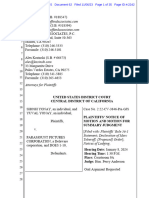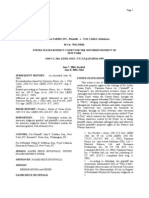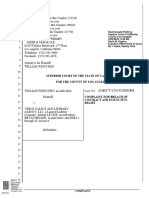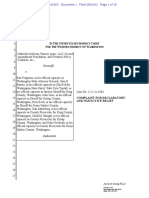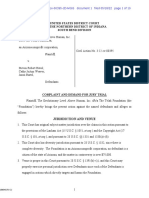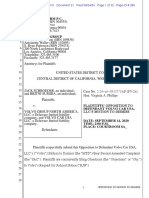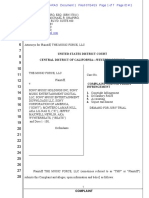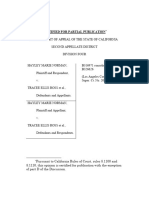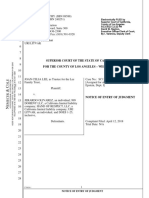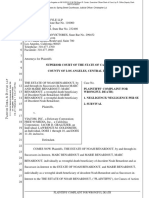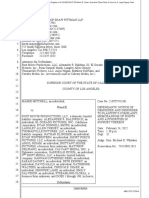0% found this document useful (0 votes)
5K views8 pagesCourt Denies X Corp.'s Injunction
This document is a memorandum and order from a United States District Court regarding a plaintiff's motion for a preliminary injunction to prevent enforcement of Assembly Bill 587. The court denies the motion, finding that the plaintiff failed to establish a likelihood of success on the merits of its claims that the bill is unconstitutional or preempted by federal law. Specifically, the court finds that the bill's requirements that social media companies disclose their terms of service and submit content moderation reports likely regulate commercial speech in a way permitted by the First Amendment.
Uploaded by
THRCopyright
© © All Rights Reserved
We take content rights seriously. If you suspect this is your content, claim it here.
Available Formats
Download as PDF, TXT or read online on Scribd
0% found this document useful (0 votes)
5K views8 pagesCourt Denies X Corp.'s Injunction
This document is a memorandum and order from a United States District Court regarding a plaintiff's motion for a preliminary injunction to prevent enforcement of Assembly Bill 587. The court denies the motion, finding that the plaintiff failed to establish a likelihood of success on the merits of its claims that the bill is unconstitutional or preempted by federal law. Specifically, the court finds that the bill's requirements that social media companies disclose their terms of service and submit content moderation reports likely regulate commercial speech in a way permitted by the First Amendment.
Uploaded by
THRCopyright
© © All Rights Reserved
We take content rights seriously. If you suspect this is your content, claim it here.
Available Formats
Download as PDF, TXT or read online on Scribd
/ 8











